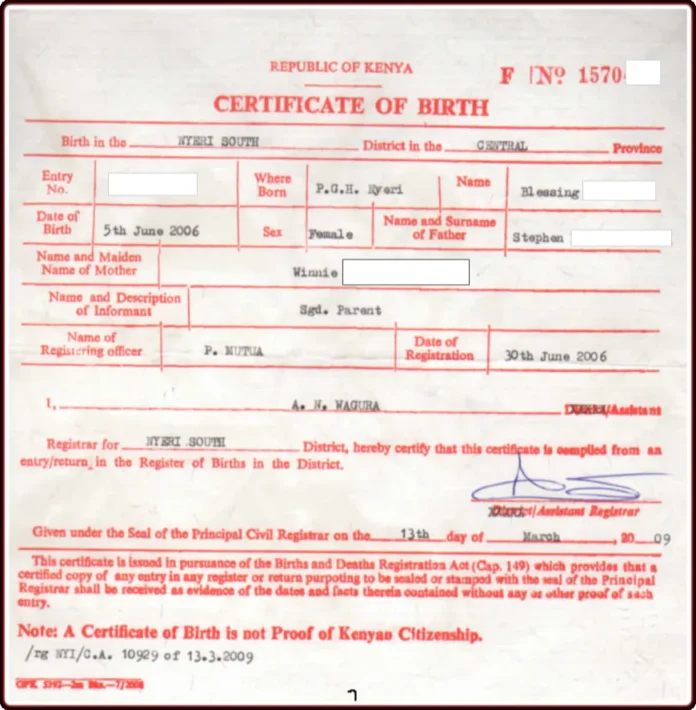Kenya has witnessed a steep decline in birth registrations and fertility rates over the past two years, marking a significant demographic shift, according to a new report released by the Kenya National Bureau of Statistics (KNBS).
The number of birth certificates issued nationally dropped from 1,987,910 in 2022 to 1,349,949 in 2024, a decrease of more than 600,000. KNBS attributes the reduction to both declining fertility rates and operational challenges, including shortages of official birth certificate booklets.
The report also highlights significant regional disparities. Nairobi County led with 152,433 certificates issued in 2024, followed by Kiambu (67,632) and Kilifi (62,352). In contrast, the lowest numbers were recorded in Samburu (6,230), Lamu (6,845), and Isiolo (9,378).
In the coastal region, Mombasa remained the top performer in birth registrations over the last three years, though its numbers declined steadily from 58,226 in 2022 to 40,821 in 2024. Kilifi, after peaking at 90,602 in 2023, also saw a significant drop in 2024. Urban centres like Nakuru and Eldoret mirrored this trend, with Nakuru’s registrations falling from 88,489 to 62,118, and Uasin Gishu from 52,876 to 35,931 during the same period.
The downward trend in birth registrations aligns with a broader national decline in fertility. Kenya’s Total Fertility Rate (TFR), the average number of children per woman, fell from 2.8 in 2022 to 2.3 in 2024. Similarly, the General Fertility Rate (GFR) dropped from 98 to 75.9 births per 1,000 women of reproductive age, while the Crude Birth Rate (CBR) declined from 24.1 to 21.2 births per 1,000 people.
Age-specific data show that women aged 20–24 and 25–29 remained the most fertile groups, though their rates also fell, from 147 and 141 per 1,000 women in 2022 to 128 and 117 in 2024, respectively.
The KNBS report reflects a demographic shift that experts say could have far-reaching implications for economic planning, healthcare, and population policy in the coming years.
Written By Rodney Mbua



















